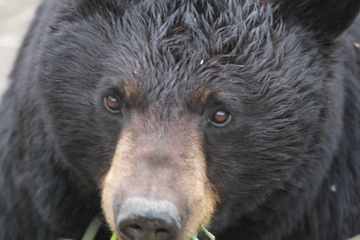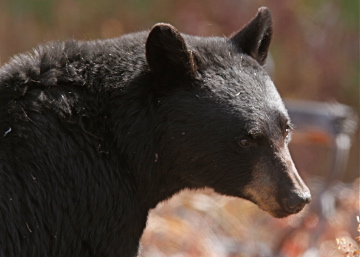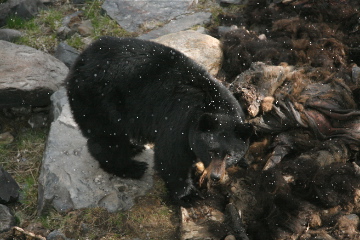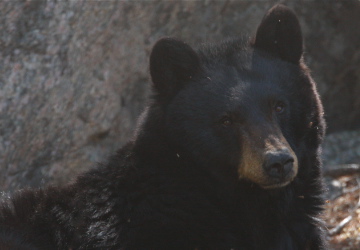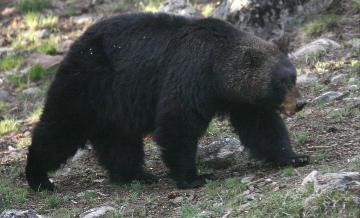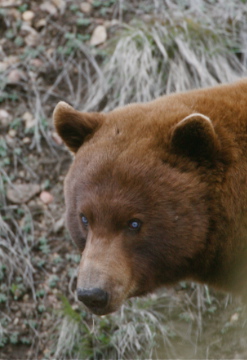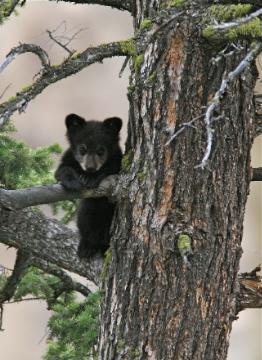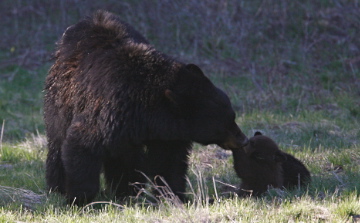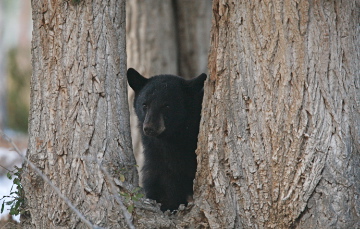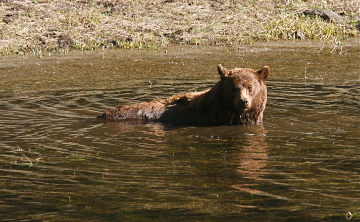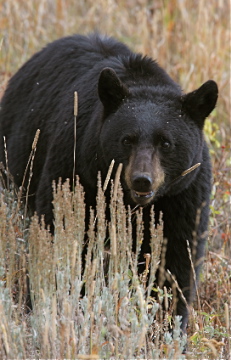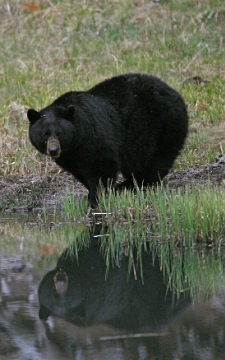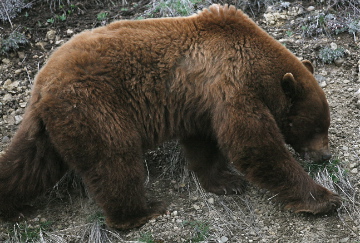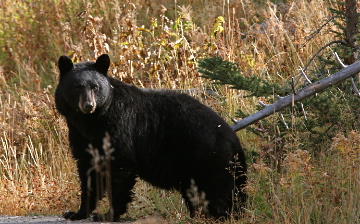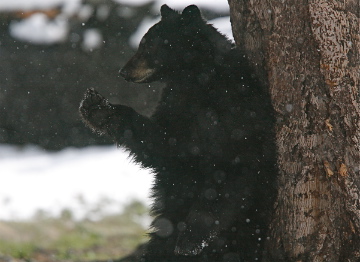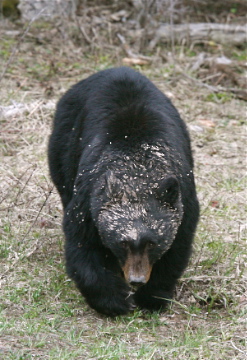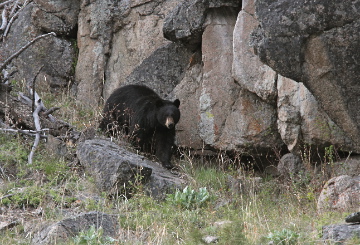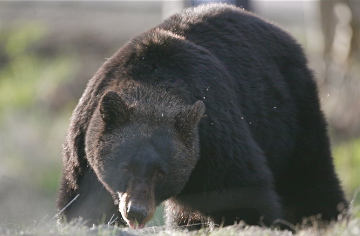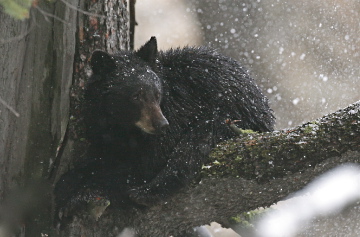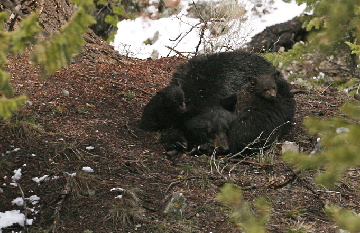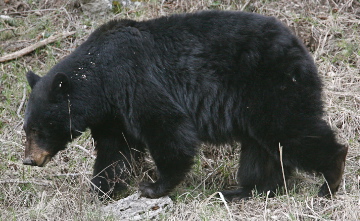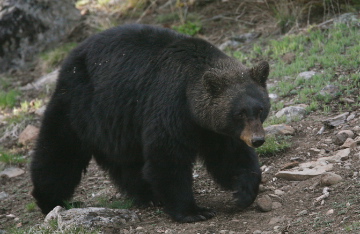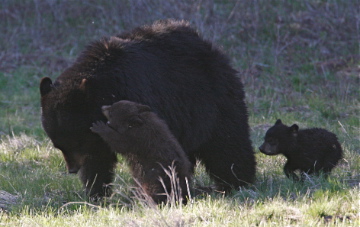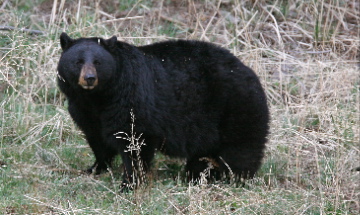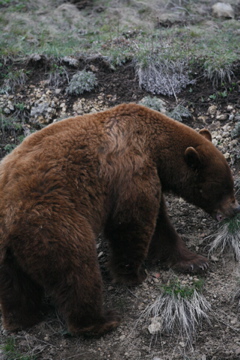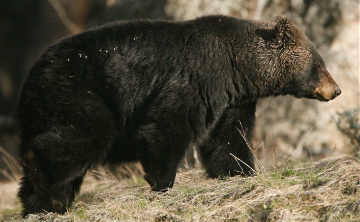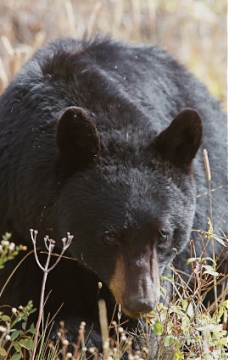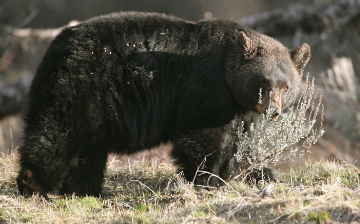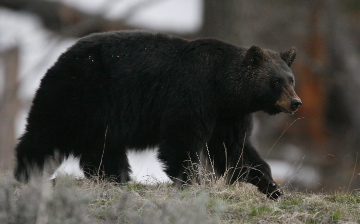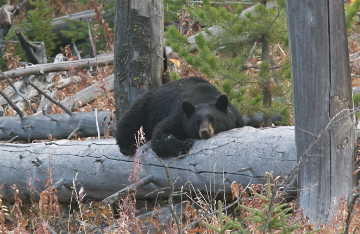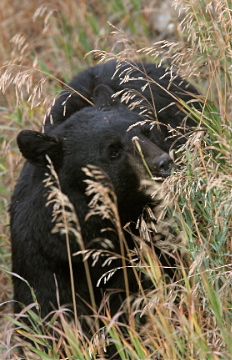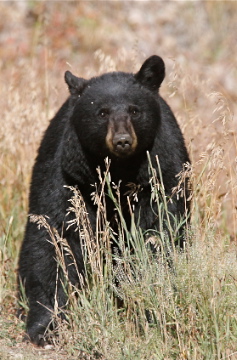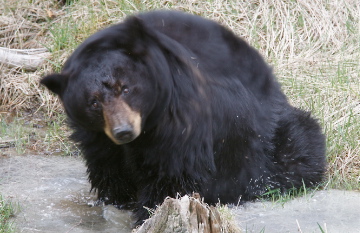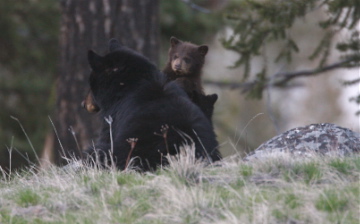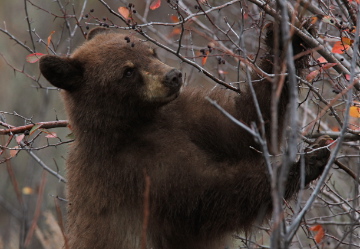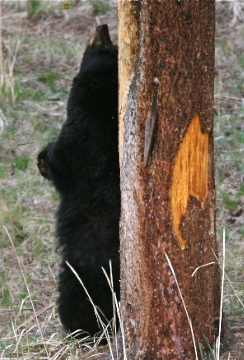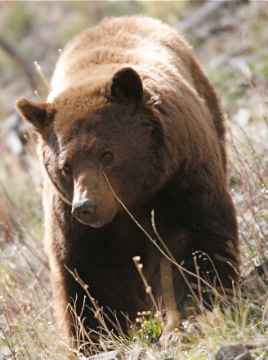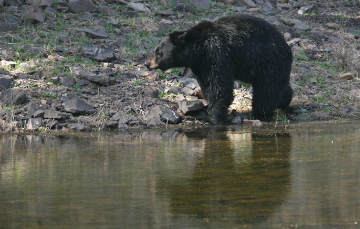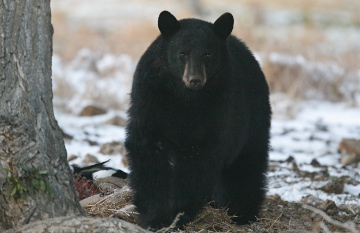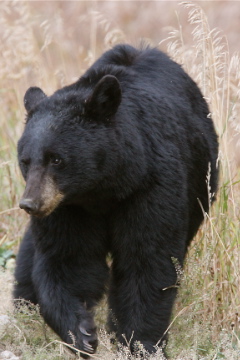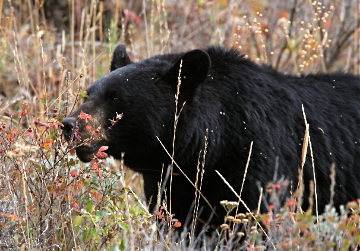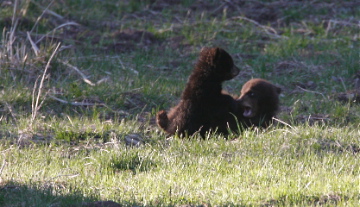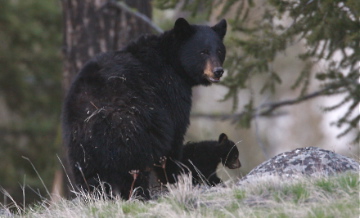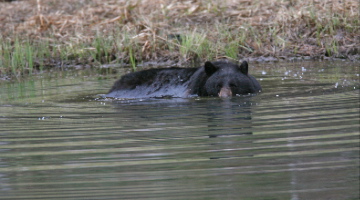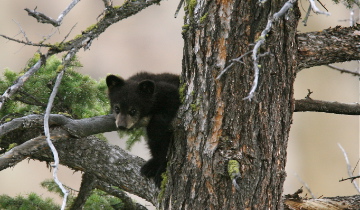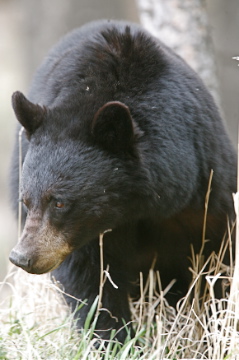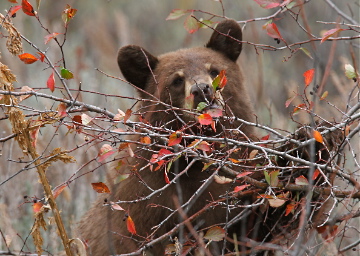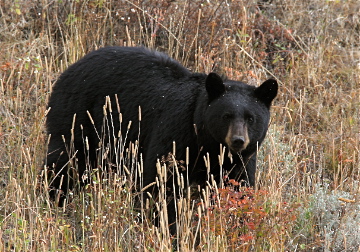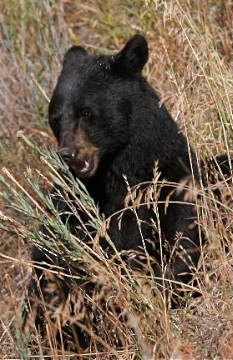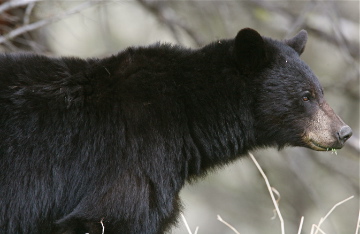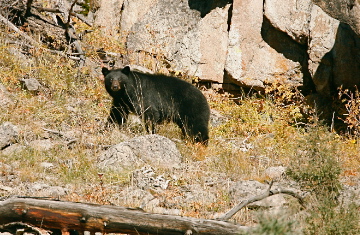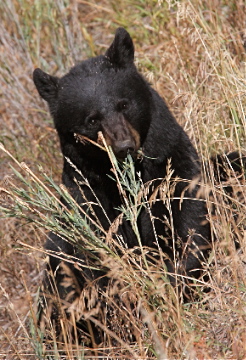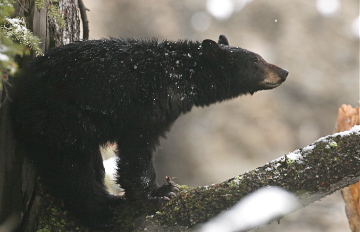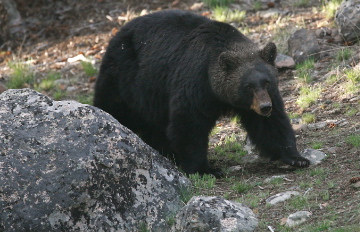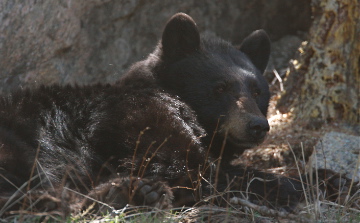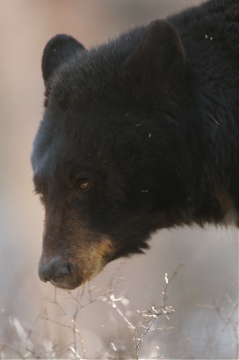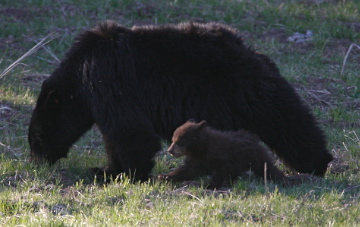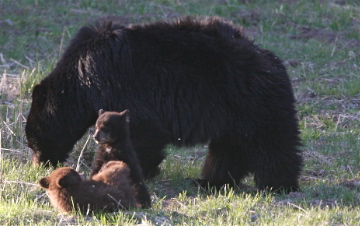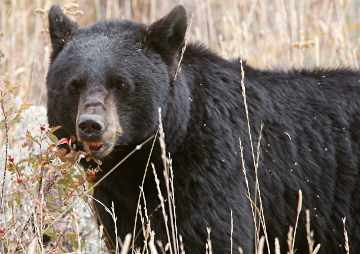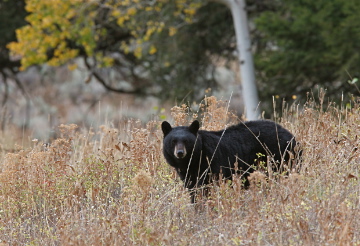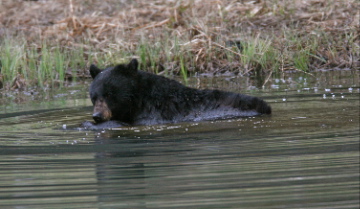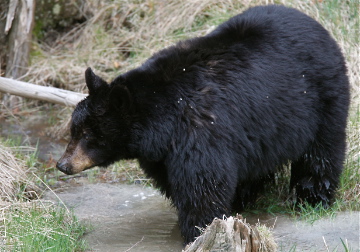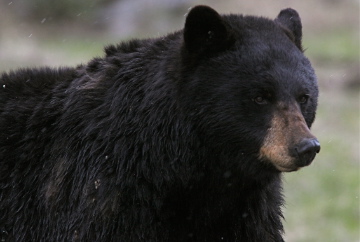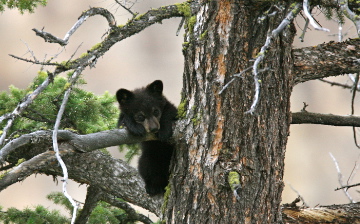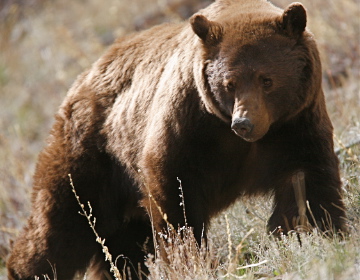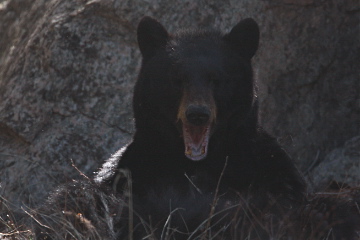Black Bear
The black bear is the most common bear species in North America. These bears roam from the Atlantic to the Pacific in at least 40 states and their range extends from Canada and Alaska into Mexico. The other bear species found in North America are the brown bear (grizzly) and polar bear. Black bears are very opportunistic at what they will consume. Considered to be an omnivore, most of their diet consists of grasses, leaves, nuts, bird seed, honey, fruits, roots, berries, and insects such as moths, termites and bees. To add to their carnivore diet, they will consume fish, rodents, mammals, carrion and human garbage. Bears that become habituated to human food become dependent on humans for food. This then results in a loss of their wildness and a healthy fear of humans, and therefore the bears become dangerous. They always say ‘a fed bear is a dead bear’.
Solitary in nature (except for mating behavior and sows with cubs), black bears tend to spend a lot of time in forests. The bears usually forage alone, but will tolerate each other with occasional gripes and forage in groups if an abundance of food exists in one area. When searching for a black bear, one might want to look up, as they spend a lot of time in trees. Mothers will stow their cubs all day in a tree for protection. When they feel threatened, they will climb high up. Black bear have the perfect combination of non-retractable claws and strong legs to carry up their fairly large mass, whereas a grizzly is simply too heavy to climb.
Contrary to popular belief, black bears do not truly hibernate. During the winter dormant period, they do not eat, drink or empty their waste, but they do use their body fat that is stored. Their heart rate is slowed but they wake up and can even go outside for a look around. It depends on local weather conditions and availability of food during the winter months. In regions where there is consistent food supply and warmer weather throughout the winter, bears may not hibernate at all or do so for a brief time. Females give birth in the winter dens and nurture the helpless cubs inside until spring time, remaining denned throughout the winter. The cubs (usually 2-3 in number), stay with their mother for about 2 years.
Their life expectancy could be up to 30 years in the wild. Black bears are extremely adaptable and show great variation in habitat types. We know that they are very intelligent animals. There is concern that with habitat loss and fragmentation, they will find it difficult to locate food, water and shelter. Additionally they will experience inter-competition quarrels that lead to death and loss of genetic variation. As black bears move into our area (which was formerly theirs), the frequency of encounters with them increases. They naturally avoid us and we must be mindful of their presence.
BLACK BEAR VS GRIZZLY
If you are in a territory where grizzly and black bear overlap, then you need to go by more than fur color to know which species you are dealing with. Alaska, western Canada, Wyoming, Idaho, Montana and Washington have both species. Grizzly bears are also known as brown bears. However, it is confusing to many that a bear which has brown fur could in fact be a black bear. A black bear that has brown fur is known as a ‘cinnamon’. Make no assumption of a bear species based on color of the bear but rather on other physical characteristics. Both grizzly and black bears have many different colorations, much like human hair. Grizzly fur color ranges from white, blonde, gray, black and reddish color, but are most commonly medium to dark brown. Black bears exhibit great variation in color as well, ranging from black to light blond, but most are black. Grizzlies have a large shoulder hump which is unmistakable. A grizzly bear’s face is like a rounded dish with a clear depression between the eyes and the end of the nose. Grizzlies also have short rounded ears. Black bears have a longer face with an elongated nose and ears that are larger and more directly pointed. Grizzly bear claws are huge and their toe imprints of the digits are close together, usually touching each other. There is an arc in their toe pattern; whereas a black bear’s toe pattern is straighter along the digits and their claws are smaller by up to 3 inches. Size is a poor identifier as both bear species vary greatly in mass. However, a grizzly is usually much larger and can weigh over 1000lbs ( though most are between 400-800 lbs). Grizzly can stand over 8ft tall. Black bears can be over 400 lbs and can stand up to 5 ft tall.
It is important to note that almost all grizzly attacks on humans occur as a defensive measure of a perceived aggression upon them; whereas a black bear attack is more likely to be predatory against humans. This is why they say “play dead with a grizzly and fight a black bear”. But I would say: know why this bear is being aggressive or attacking you and then play dead if it is defensive and fight back if the bear is being predatory. Bears attack when startled, so make continuous noise. Keep calm and move away prudently. Do nothing that is excitable. Anytime a bear is injured it can be especially dangerous. Always stay far away from a sow with her cubs and do not approach carcasses that bears are feeding on. Most charges by bears are bluff charges so they are giving you a way out. Bear spray is an effective deterrent, but it will be you and your behavior that is your best source for being safe around bear country.
Know the signs of a bear escalating an encounter. Standing up to you, grunting, chattering their teeth, and staring at you are bad signs. Never run unless you know that you can get somewhere faster than a bear as they can run at speeds of 35 mph. By respecting them, you can enjoy their presence and play it safe for your safety.
